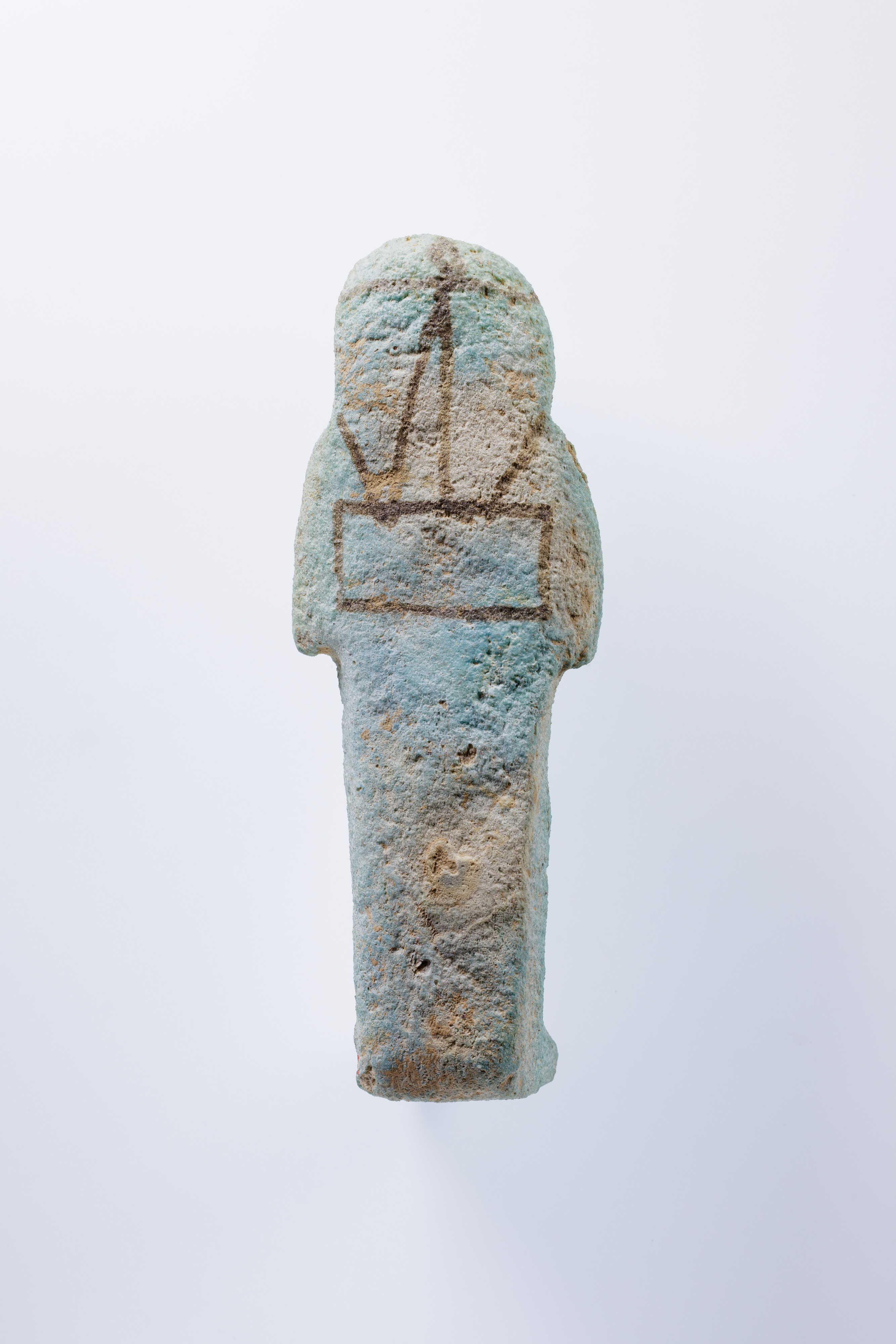Shabti of Hor
Third Intermediate Period
Inscribed for a man named Hor, this is one of a small group of funerary figures found in some debris near the much earlier (built around 1475 BCE) Temple of Hatshepsut on the West Bank at Thebes. The style of the shabti suggests a date in Dynasty 21, between about 1100 and 950 BCE.
Avatars of the deceased, these small figures were placed in tombs to carry out agricultural work and other manual labor on behalf of their owners in the afterlife. There were 401 shabtis in a full set: 365 workers (one for each day of the year); and 36 overseers (one for each ten-day week). This is a worker shabti—it is mummiform, and holds a hoe in each hand and has a grain basket on its back.
Due to rights restrictions, this image cannot be enlarged, viewed at full screen, or downloaded.
This artwork is meant to be viewed from right to left. Scroll left to view more.



